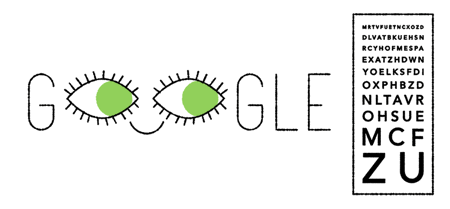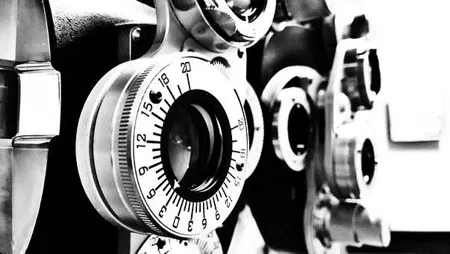We have come a long way in understanding our vision, all the way to getting your prescription and eyewear delivered to your home without leaving your computer!
Ophthalmology sprang out of what seemed like nowhere and has advanced rapidly in the past century and a half. An Ophthalmologist is an eye doctor with advanced training in diagnosing and treating eye diseases and giving prescriptions for glasses and contact lenses.
Ever wonder how we got so far with diagnostics for vision problems? It's thanks to competing Ophthalmologists Herman Snellen and Ferdinand Monoyer. They were the first people to make the charts with letters that you see in doctor’s offices today.
The First Vision Tests
In 1862, Herman Snellen created the first chart used to test a person’s visual acuity. You have probably seen the Snellen Chart if you've ever walked into an eye doctor’s office--the familiar rows of letters, size ranging from largest to smallest as you look down the chart.
These charts were the first tools invented to conduct vision tests. From Snellen’s came many different versions of the chart, but Snellen’s to fit a 5x5 meter grid, with a big ‘E’ at the very top. Sometimes people refer to it as simply “The E Chart."
Taking a vision test with this chart worked very similarly as it does today. The person taking the test stands 20 feet, or about 6 meters, away from the chart and covers one eye. With the other eye, the patient reads the letters from the biggest to the smallest line. When the patient can't read any more letters, they cover the other eye and start from the top again.
Because the person stood 20 feet away, and the size of the chart was 5x5 meters, it made it easy to determine the person's distance vision and acuity according to a recognized standard. The prescription depends on how many rows the person can read, and how that changes with their distance from the chart. For example, if a person can read the entire chart from 20 feet away, their vision is 20/20.
Ferdinand Monoyer soon found a way to rival how these charts calculated a vision prescription in 1872. This ophthalmologist invented the Dioptre. A Dioptre is a point of measurement in decimals and is used to calculate the strength of your eyesight. Monoyer also made his own alphabetical chart, where each row was assigned a Dioptre decimal point.
On his self-named Monoyer Chart, he would also hide his name in the letters of the chart--you'd be able to read "and “Monoyer” from the bottom row up. On May 9th, 2017, Google paid tribute to Monoyer’s 181st birthday, making a google doodle based on his vision test. On the chart in the doodle, you're able to see his first and last name in the letters.
 Monoyer and Snellen take the credit for great leaps in the understanding of vision and conducting vision tests.
Monoyer and Snellen take the credit for great leaps in the understanding of vision and conducting vision tests.
Though their charts rivaled for some time, 100 years later came the LogMAR chart in Australia. Ian Bailey and Jan Lovie invented the LogMAR chart in 1976. This chart featured evenly spaced and sized letters for each row, and had a different decimal system than the one Monoyer created. Each letter would have its own decimal value, so the person being tested wouldn’t have to read the entire row of letters on the chart.
Because the chart lacked variables due to the lack of font and size change, it became one of the most recommended tools for testing vision. Though the LogMAR test has recently become more highly regarded, it's only slowly making its way into being a more popular form of testing. If you Google the most used vision testing chart, the Snellen chart is the first to show up.
Eye Exam Vs. Vision Tests - What’s the Difference?
These charts have strengthened our understanding and ability to give lens prescriptions, though they have only provided a means to administering a vision test. There have been more fundamental developments in giving more thorough and proper eye exams.
A vision test can demonstrate how well you can see, but it can’t determine the health of your eye. A comprehensive eye exam is essential to not only check your vision but also to also check up on other eye problems. During an eye exam, a licensed optometrist looks at the muscular health of your eye, your peripheral vision, and the refraction ability of your eyes.
The big mask-like thing you look through in an eye exam helps doctors determine if light is refracting through your eyes correctly. It's called a phoropter, and we have only a vague history of the tool. We know someone invented it in the early 1900s, and its name was in use by 1921. Eye doctors use it by placing different lenses over the receptacle and asking which lenses help you see better.
 An eye exam is also essential to test for color blindness—red-green color blindness being the most common type of color vision deficiency, making it difficult to distinguish between red and green.
An eye exam is also essential to test for color blindness—red-green color blindness being the most common type of color vision deficiency, making it difficult to distinguish between red and green.
An eye exam can also check for macular degeneration, which is the loss of sight in the center of your field of vision, usually occurring with age. If you have taken a comprehensive eye exam before, you may have had a test where they blow a puff of air into your eye, which tests for glaucoma, a disease that damages your eye’s optic nerve.
These tests are crucial to determine the health of your eyes. Some tests, that can only occur in person, can catch early signs of diseases or problems with your eye health. If you need to determine the health of your eye more than vision issues, it is essential to schedule an eye exam rather than a vision test.
Can I Take a Vision Test From Home?
Since 2020, it's become difficult for some people to get an eye exam because of lockdown orders. Still, it's important to take care of your vision and have your prescriptions updated when necessary. Since our knowledge of vision tests has expanded since 1862, it's now possible to take a vision test from your computer or smart device. WebEyeCare currently offers an at-home vision test that received an emergency use authorization by the FDA for as long as the pandemic declaration lasts.
You can use this online vision test to renew your prescription. We offer two different tests: one to take for those who wear glasses, and a test for those who wear contact lenses. You no longer have to go into the eye doctor and read the Snellen chart of letters, and instead, you can simply look at a series of images the vision test shows you.
Like this vision test’s predecessors, you will have to cover one eye and then the other while looking at these images, and then you would report back what you could and couldn’t see. Our licensed ophthalmologists and eye care professionals will take your results, and get your prescription back to you within two business days.
Visibly Inc. developed this test a couple of years ago but only recently gained emergency use approval. With the authorization to use this test, Webeyecare is excited to use this development, and eye tests are more efficient and accessible. If you are eligible, it's time to take advantage of how far we’ve come in vision care with Webeyecare.
Who Can Take the Test?
Your eligibility is based on your age, medical history, and your previous prescription. The at-home vision test is made to renew a prescription, so you must have a prior eyewear prescription given in the last two years from a comprehensive eye exam. It is essential to keep up with the health of your eyes and vision. An online vision test’s purpose is to provide a convenient way to renew your prescription.
Our blog post, Online Eye Exam or Online Vision Test? covers more details on how the test works, who is eligible, and the importance of both eye exams and vision tests. Check out this post and many others to learn more about how WebEyeCare is the best choice for getting your eyewear prescription, contact lenses, and glasses right to your door.
From Snellen’s and Monoyer’s alphabetical charts to phoropters and the LogMAR test, we have moved to images on your own computer, and it has become easier than ever to get proper vision care.
 Save yourself from getting into rush hours and buy your contacts online.
Save yourself from getting into rush hours and buy your contacts online.








